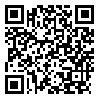BibTeX | RIS | EndNote | Medlars | ProCite | Reference Manager | RefWorks
Send citation to:
URL: http://rjms.iums.ac.ir/article-1-2074-en.html

 , Mehraban Falahati
, Mehraban Falahati 
 , Mohammad Sadri
, Mohammad Sadri 
 , Shirin Farehyar
, Shirin Farehyar 
 , Sanam Nami
, Sanam Nami 
 , Shima Nozari
, Shima Nozari 
 , Farzaneh Ahmadi
, Farzaneh Ahmadi 
 , Gholamhossein Ghaffarpour
, Gholamhossein Ghaffarpour 

Background: Saprophytes are one of the agents causing nail dystrophy. Saprophytes can invade healthy nail or may invade nails previously damaged in the course of other diseases and grow with suitable conditions. The reported incidence of saprophytic nails is between 1.43-17.6% . Saprophytes preferably invade the nails on the big toes, especially in individuals above 60 years. The most etiologic agents of saprophyte nail are Aspergillus spp, Acremonium spp, Scopulariopsis spp, Penicillium spp, and fusarium. The purpose of this study was to determine the prevalence agents of saprophytic nails in patient that had referred to Razi hospital.
Methods: This was a cross sectional study and nail samples were analyzed by direct microscopy and culture. Microscopic examination of these specimens was carried out in potassium hydroxide solution (20%). These specimens were cultured on two media of sabourad dextrose Agar (S). Czapek-Dox Agar [CZA] medium was used for identification of Aspergillus species. For investigation of relevance between the variables, Chi-square test and Fisher exact tests were used.
Results : In this study, 34 cases were positive by both direct microscopy and culture. Of those, 17 patients were females and 17 patients were males. The most frequently isolated saprophytes from nails was Aspergilus flavous (35.3%). Meanwhile 58.8% of saprophytes were isolated from toe nails. In this study the distal subungual onychomycosis was the most frequent (% 64.7%). The age group 50-59 years (29.4%) had the highest prevalence of saprophytic nail infections.In this study the prevalence of saprophytic nails infections was 17.2%.
Conclusion: A proper diagnosis, consisting of both clinical and mycological examinations, may aid the clinician in selecting the most appropriate therapy. Knowledge of epidemiology and mycology characteristics of nail infections has been noted by many authors as being an important tool for control of these fungal infections.



